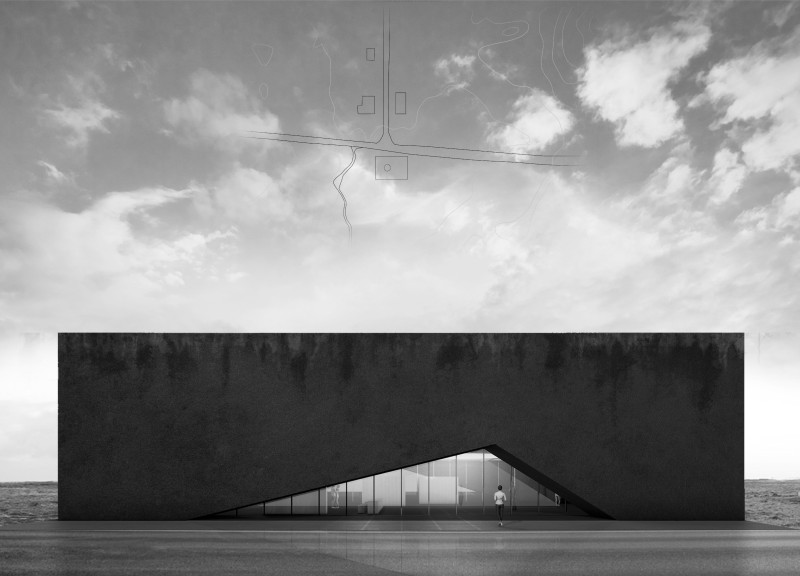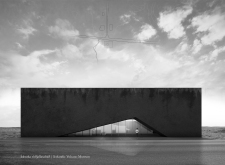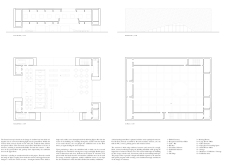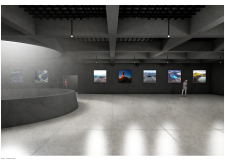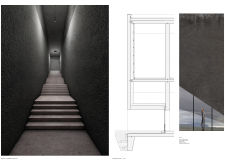5 key facts about this project
The Icelandic Volcano Museum, known as Íslenska eldfjallasafnið, is designed to connect closely with Iceland's geological heritage. Located in a volcanic landscape, the museum serves as both an educational resource and an exhibition space focused on the country’s volcanic features. The design centers around a hollow box shape, featuring triangular voids that invite natural light indoors, encouraging exploration and curiosity about the forces that shape the earth.
Form and Spatial Organization
The design presents a hollow box with triangular cuts, which bring light into the interior. These voids create a strong connection between the outside and the inside. Visitors are drawn to explore the many features of the museum. The spaces are organized for flexibility, allowing both the entrance office and the exhibition areas to function without structural limitations. This arrangement supports various uses, ensuring adaptability for different exhibitions.
Light and Experience
A central element is the conic orifice that extends through both levels of the building. This feature directs sunlight into the heart of the museum, enhancing the atmosphere of the exhibition areas. Visitors can see the upper floor as soon as they enter, establishing a visual link to the displays above. The interplay of light and space brings to mind the experience of being inside a volcanic structure, adding depth to the visitor's journey.
Materiality and Context
Reinforced concrete is used for its strength and reliability. The exterior features a rough, black finish that imitates volcanic rock. This choice allows the building to fit well with the nearby landscape. The materials reinforce the museum’s focus on volcanoes while maintaining a cohesive relationship with the Icelandic environment.
Technical Features
An underground level mirrors the usable spaces above and provides necessary services like restrooms and technical areas. This layout promotes efficient operations without distracting from the exhibition spaces. The design thoughtfully incorporates essential elements, ensuring that the museum serves its purpose while creating a notable presence in the landscape.
The angled openings in the façade capture sunlight and create dynamic visuals. This subtle detail enhances the connection between the museum and the natural surroundings.


